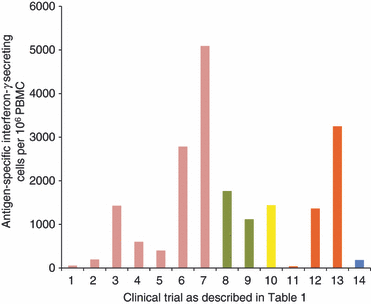T-cell-inducing vaccines - what's the future
- PMID: 22044118
- PMCID: PMC3246649
- DOI: 10.1111/j.1365-2567.2011.03517.x
T-cell-inducing vaccines - what's the future
Abstract
In the twentieth century vaccine development has moved from the use of attenuated or killed micro-organisms to protein sub-unit vaccines, with vaccine immunogenicity assessed by measuring antibodies induced by vaccination. However, for many infectious diseases T cells are an important part of naturally acquired protective immune responses, and inducing these by vaccination has been the aim of much research. The progress that has been made in developing effective T-cell-inducing vaccines against viral and parasitic diseases such as HIV and malaria is discussed, along with recent developments in therapeutic vaccine development for chronic viral infections and cancer. Although many ways of inducing T cells by vaccination have been assessed, the majority result in low level, non-protective responses. Sufficient clinical research has now been conducted to establish that replication-deficient viral vectored vaccines lead the field in inducing strong and broad responses, and efficacy studies of T-cell-inducing vaccines against a number of diseases are finally demonstrating that this is a valid approach to filling the gaps in our defence against not only infectious disease, but some forms of cancer.
© 2011 The Author. Immunology © 2011 Blackwell Publishing Ltd.
Figures
References
-
- Gubser C, Hue S, Kellam P, Smith GL. Poxvirus genomes: a phylogenetic analysis. J Gen Virol. 2004;85(Pt 1):105–17. - PubMed
-
- Kammer AR, Ertl HC. Rabies vaccines: from the past to the 21st century. Hybrid Hybridomics. 2002;21:123–7. - PubMed
-
- Johnson N, Cunningham AF, Fooks AR. The immune response to rabies virus infection and vaccination. Vaccine. 2010;28:3896–901. - PubMed
Publication types
MeSH terms
Substances
Grants and funding
LinkOut - more resources
Full Text Sources
Other Literature Sources
Medical


